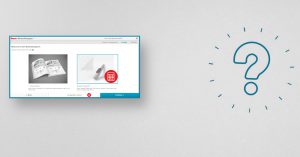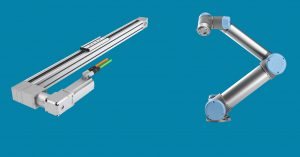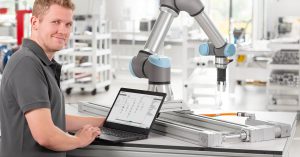When it came to updating an assembly line, a specialist mechanical engineering company was spoilt for choice.
Established in 1996, STiMA GmbH & Co. KG specialises in the automation of manufacturing processes in all branches of industry. When designing special machines and systems, STiMA’s top priorities are efficiency and cost-effectiveness. STiMA solutions are used in assembly, machine loading, quality control and intralogistics. Customers benefit from single-supplier support during every phase, from design and parts manufacture to assembly. The company, which is based in Hatterode in the German state of Hessen, has been a member of the item pluspartner network since 2013. When it came to a large-scale project, STiMA was able to draw on its in-house expertise in hybrid assembly systems – that is to say, systems that combine manual work benches and automated processes. They offer the dual benefits of increasing productivity while also making life easier for the workers, thanks to the application of ergonomic principles. The project in this particular case involved renewing an assembly line for office cupboard carcasses (in other words, the basic framework of the cupboards) for CEKA GmbH & Co. KG. The MB Building Kit System profile technology is in use at all stations of the assembly line. The item Linear System also shows its many advantages at a station for lifting and turning the cupboards and a station for setting them upright.
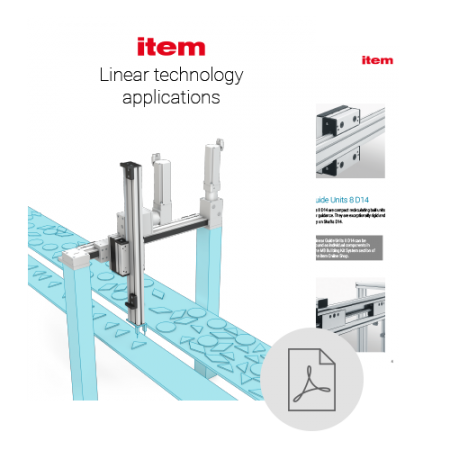
item linear technology at a glance
Find out more now in our factsheet. It provides you with a compact overview of solutions, components and the numerous uses of item linear technology.
GO TO THE FACTSHEET
Flexible furniture assembly for a multitude of product variants
CEKA specialises in high-quality office furniture and room-in-room systems. The company’s production facility, which has a footprint of 30,000 square metres, has been located at the Alsfeld site since 1924. CEKA wanted to modernise its existing assembly line for a number of reasons, including safety and a targeted optimisation of cycle times. STiMA had to deal with many challenging requirements in this regard. For instance, CEKA wanted to continue using its existing conveyor belts. There were other considerations, too, such as the limited installation space, the requirement for an ergonomic assembly process and the need to make allowances for the entire product portfolio without any additional setup processes. “The assembly line needed to be suitable for a wide range of products. There are some cupboards that are just 30 cm wide, while other models are 1.60 m wide and 2 m high,” says Steffen Lemmer, Head of Design at STiMA. The carcasses – or cupboards – are transferred from a carcass press in a pre-assembled state. When they are transferred to the hybrid assembly system from this preliminary process, they can either be upright or lying on their side. If the cupboard needs to be put in an upright position, this is done at the very first station.
The linear gantry raises the cupboard to the correct height, so the worker can fit the door directly, without having to lift anything up.
At a lift/lower station, the cupboards are then moved down to a lower transportation height – from 700 mm to 300 mm. There’s another station attached to this one, where the cupboards can be turned through 180 degrees if necessary. “Some cupboards are put together with the open side at the front – but with other models, the open side is at the back. During the assembly process, the open side of the cupboard must always be in front of the worker. That’s why, depending on the model, some cupboards need to be rotated at this station,” explains Jonas Bohlender, Head of Electrical Planning, Programming and the Workshop at STiMA. Next – after a buffer station – comes the hybrid assembly system’s central station. Here, a gripper system picks up the cupboards and a linear gantry turns them through 90 degrees. The manual assembly work can now take place. This process has been designed to be particularly ergonomic for the staff, as Lemmer explains: “The door that needs to be fitted is lying on a bench in front of the system. The worker just needs to open up the hinges. The linear gantry raises the cupboard to the correct height, so the worker can fit the door directly without having to lift anything up.” Once the cupboard has been turned again, the second door and a base are fitted manually, and the cupboard is then lowered back down automatically. Finally, the fully assembled cupboard continues its journey on a conveyor belt.
Practical example of hybrid assembly systems – including item linear technology
The modular item Linear System, complete with drive technology from another manufacturer, is used to move the cupboards in the central station of the hybrid assembly system. As a general rule, it is easy to connect the item linear technology to the third-party drive technology and, therefore, to commission the system, thanks to components (such as drive sets, Pulleys and Shafts) that are suitable for universal use and can be drilled or cut to size. The actual linear gantry is based on Linear Unit LRE 8 D14 with a chain drive, which ensures that power is perpetually transmitted at a high level. item Linear Unit LRE 8 D25, which features solid roller elements and stable steel shafts, is used in the gripper. “As far as the sliding carriages and roller guide systems are concerned, the item modular building kit principle meant we could adjust the components to suit our precise needs – for example, we could adjust the length and width of the carriages and the spacing of the bearings,” Lemmer says. Linear guides and sliding carriages from item also take care of the lifting movements in the station where the cupboards are placed upright. Profile technology from Solingen is a basic component of all the stations. “The assembly line is essentially divided into three basic sections – and all of them contain a construction from item,” Bohlender explains. Line 8 profiles were used in all the frames, including the gripper system frame.
What we particularly like about item is the huge product range with lots of accessories, the high quality of the products, the short delivery times – even in the current climate – and the very helpful support. We are a happy item pluspartner.
In the old assembly line, there was also a station for lifting and turning the cupboards. This was primarily made of steel. The advantages of aluminium are therefore now particularly clear. “A construction made from aluminium profiles is much lighter than a steel structure, and yet it’s just as rigid. Particularly when you need to move bulky products, aluminium also uses less energy. Of course, another advantage is the simplified assembly – there are a lot of flexibility thanks to the profile grooves,” Lemmer explains. STiMA also appreciates the anodised finish of the item profiles, since there is no need for any further finishing with all the costs that would entail. All in all, this project further reinforced the STiMA team’s positive impression of item, as Lemmer emphasises: “What we particularly like about item is the huge product range with lots of accessories, the high quality of the products, the short delivery times – even in the current climate – and the very helpful support. We are a happy item pluspartner.”
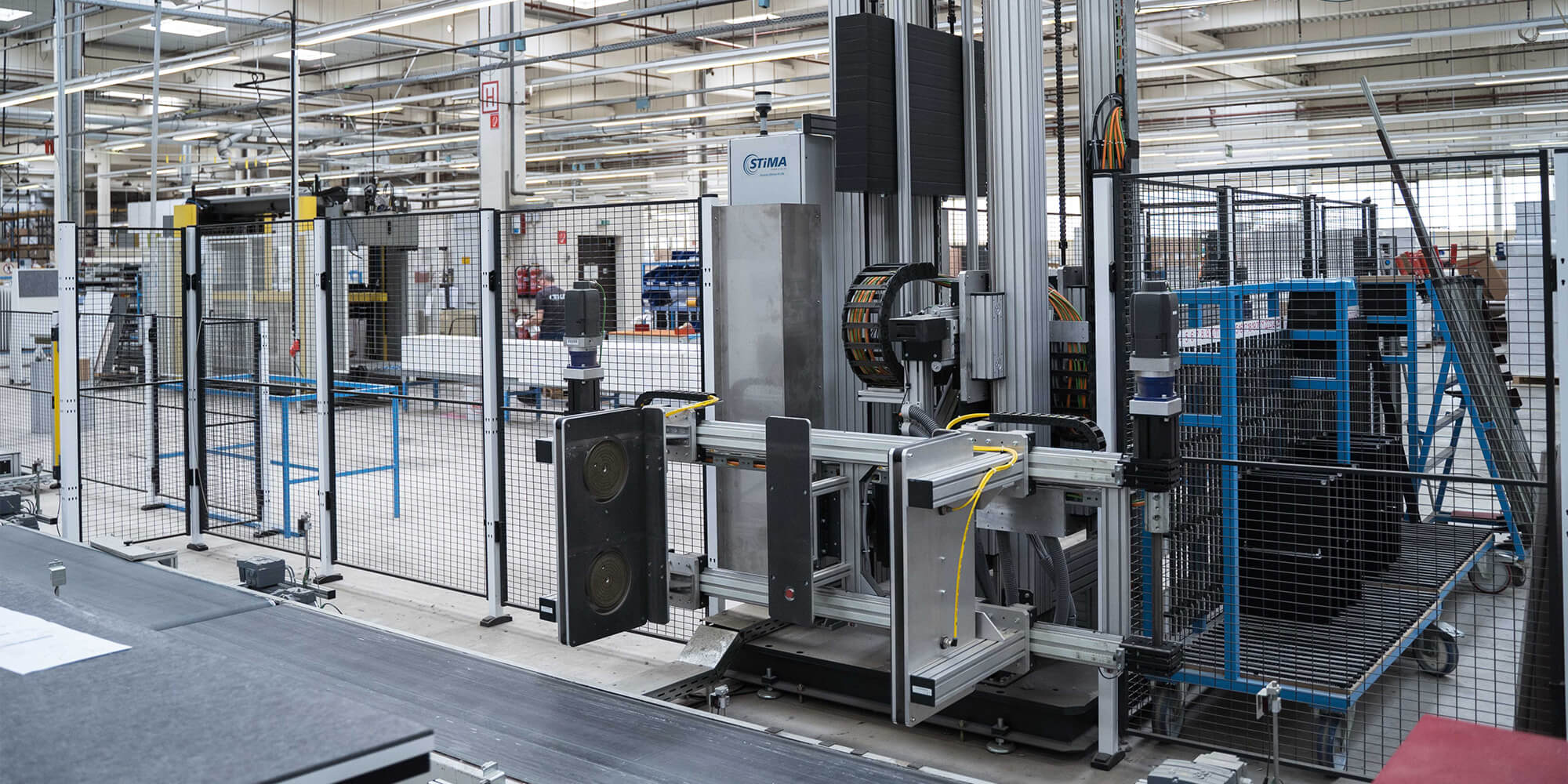
Would you like to know more about linear technology? Simply subscribe to the item blog by completing the box at the top right.

